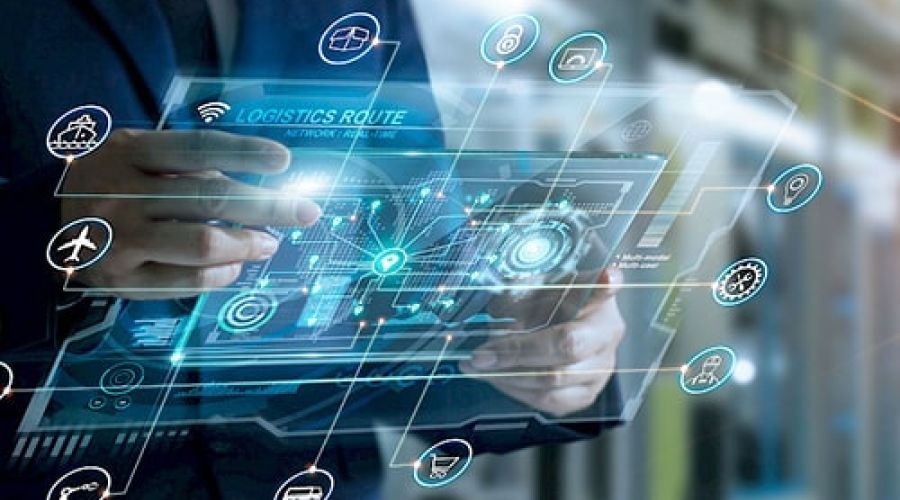
Industrial Evolution and the Concept of Industry 5.0: Human Centricity, Sustainability and Resilience
The evolution from Industry 1.0 to Industry 5.0 reflects a continuous trajectory of technological innovation and industrial advancement (see Figure 1). Industry 5.0 builds on the foundations laid by Industry 4.0 by integrating the key pillars of human-centricity, sustainability, and resilience. While Industry 4.0 prioritized automation and technological efficiency, Industry 5.0 shifts the focus toward the well-being of workers, aligning technology with human needs, reducing environmental impact, and developing robust systems that can adapt to disruptions and crises (European Commission, 2024). These principles represent a shift toward considering societal and environmental impacts in conjunction with technological advancements (European Commission, 2021). The PROSPECTS 5.0 initiative plays a critical role in driving this transition by exploring how these principles are applied across various sectors and refining our understanding of Industry 5.0.
In Industry 5.0, human well-being and individual needs take centre stage. Production systems are designed to enhance workers’ quality of life and productivity, while also safeguarding fundamental rights such as privacy, autonomy, and dignity. This humancentred approach promotes a fairer and more inclusive working environment by balancing technological advancements with human welfare (European Commission, 2021). Sustainability in Industry 5.0 is focused on establishing circular processes that prioritize the reuse, repurposing, and recycling of natural resources. These efforts aim to reduce waste and mitigate environmental harm. Key strategies include lowering energy consumption and cutting greenhouse gas emissions to prevent resource depletion and environmental degradation. The overarching objective is to create a self-sustaining industrial ecosystem that operates within planetary boundaries. Technologies such as artificial intelligence and additive manufacturing play an essential role in enhancing resource efficiency and minimizing waste, thereby fostering a circular economy and promoting long-term industrial growth (European Commission, 2021, European Commission, 2024).
Resilience is another foundational element of Industry 5.0. It emphasizes the importance of building industrial systems that are adaptable and capable of withstanding various disruptions. This involves creating flexible production systems, resilient supply chains, and adaptable business strategies that can respond effectively to crises such as supply chain breakdowns or economic instability. Recent events, including the COVID-19 pandemic and geopolitical upheavals, have highlighted the vulnerabilities of globalized industries, especially in critical sectors such as healthcare and national security. By strengthening these areas, Industry 5.0 seeks to ensure that operations remain stable and efficient even in times of crisis (European Commission, 2024).
As the PROSPECTS 5.0 project continues, real-world case studies will provide further insights into how Industry 5.0 principles are being applied across industries. One example already documented is the use of human-centric technologies, such as exoskeletons, in industrial environments. Exoskeletons, as described by Alojaiman (2023), are assistive devices that enhance bodily movements and support various parts of the body, reducing the effort required to lift or move equipment. These devices not only improve workplace safety by reducing the risk of musculoskeletal injuries but also enhance operational efficiency (Alojaiman, 2023). Such case studies deepen our understanding of the Industry 5.0 paradigm, where technology is designed not only to improve efficiency but also to enhance the human experience within production systems.
In conclusion, Industry 5.0 represents a significant evolution in industrial paradigms, with its
focus on human-centricity, sustainability, and resilience. The PROSPECTS 5.0 project offers
valuable insights into how these principles are being practically implemented across
sectors. As Industry 5.0 continues to evolve, its guiding principles will become increasingly
integral to creating a more balanced, equitable, and sustainable industrial landscape.
Ultimately, the future of industry lies not only in technological innovation but also in the
thoughtful integration of human, societal, and environmental considerations.
References
ALOJAIMAN, B., 2023. Technological Modernizations in the Industry 5.0 Era: A Descriptive Analysis and Future Research Directions [online]. Processes, 11(5), 1318. Available from: 10.3390/pr11051318
DEMIR, K.A., G. DÖVEN, and B. SEZEN, 2019. Industry 5.0 and Human-Robot Co-working [online], 158(C), 688-695 [viewed 27 August 2024]. Available from: 10.1016/j.procs.2019.09.104
EUROPEAN COMISSION, 2021. Industry 5.0. Towards a sustainable, human-centric and resilient European industry. Luxembourg: Publications Office of the European Union. R&I Paper Series, policy brief
EUROPEAN COMMISSION, 2024. Industry 5.0 [online]. 25 March 2024, 12:00 [viewed 9 October 2024]. Available from: https://research-and-innovation.ec.europa.eu/researcharea/industrial-research-and-innovation/industry50_en#:~:text=The%20Industry%205.0%20Award%20provides,centre%20of%20the%20produ ction%20process.
RENDA, A., S. SCHWAAG SERGER, D. TATAJ, A. MORLET, D. ISAKSSON, F. MARTINS, M. MIR ROCA, C. HIDALGO, A. HUANG, S. DIXSON-DECLÈVE, P.-A. BALLAND, F. BRIA, C. CHARVÉRIAT, K. DUNLOP, and E. GIOVANNINI, 2021. Industry 5.0, a transformative vision for Europe. Governing systemic transformations towards a sustainable industry. Luxembourg: Publications Office of the European Union. ESIR Policy Brief. No. 3.
Leave a Comment
You must be logged in to post a comment.